
If you’re new to London, or just visiting, you might think chances to see a bit of nature are limited to the big parks (full of tourists) or to the weekend, when you can escape to the countryside. Yet England’s capital is actually bursting with relaxing gardens, tranquil woodland walks and wetlands… if you know where to look. In this occasional series, we’ve been exploring some of London’s many green spaces.
Cemetery or Nature Reserve?
Take a short (15 minutes or so) walk from Woodberry Wetlands, and you find yourself at another gorgeous London green space. But this one is very different from the calming waters of Woodberry with its birdlife. That’s because today’s destination is also a cemetery.
Abney Park is one of London’s “Magnificent Seven” – a group of beautiful garden cemeteries in the city, the most famous of which is Highgate. The site originally housed two fine estates. Once it became a cemetery in 1840, it quickly became a popular burial ground for non-conformists and dissenters. The chapel in the heart of the grounds is non-denominational and non-consecrated.
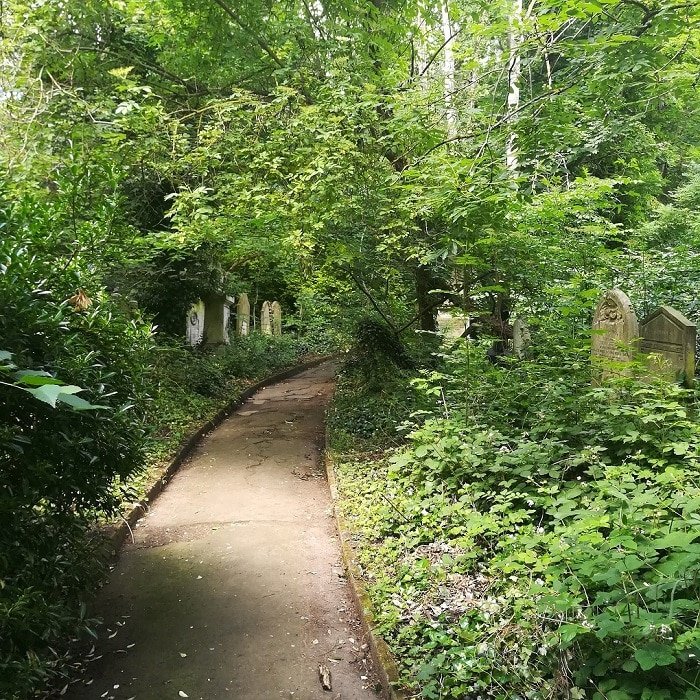
Despite its more than 200,000 graves, Abney Park has always been more than a cemetery. In the early stages of its design, it was also planned as an arboretum and home to several thousand different plant species. The plants took over by the 1970s, when the cemetery had fallen into a state of disrepair. Shrubs and ivy wound their way around the abandoned headstones, resulting in a far cry from the carefully manicured cemeteries we find in most towns. In the 1980s, the borough of Hackney took over. The park/cemetery/nature reserve is now cared for by the Abney Park Trust.
The Chapel
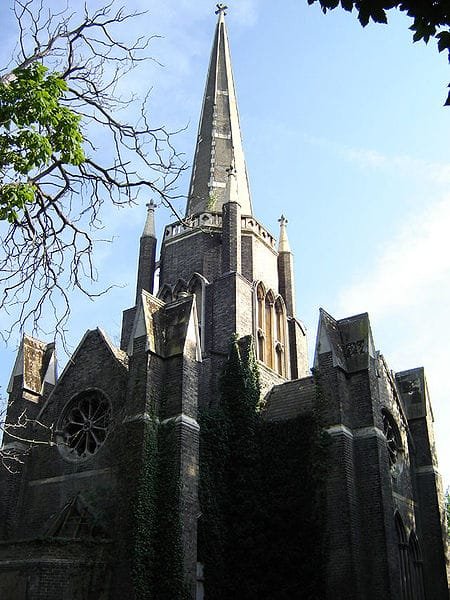
As mentioned before, the chapel at Abney Park is non-denominational. As such, the design is that of a Greek cross, with all four arms of the cross equal in length to avoid any bias. The oldest-surviving non-denomination chapel in Europe, it has been closed for safety reasons since 2012. Restoration plans are underway.
One interesting aside: because of its non-denominational nature, you will find a great number of Welsh people buried here. One of the many informational signs throughout the park draws attention to several notable Welsh people buried here, including renowned nurse Betsi Cadwaladr and anti-slavery campaigner Henry Richard. The former served with Florence Nightingale and went on to create the largest health organization in Wales. The latter was a Welsh MP and Congregationalist minister.
Walking Through Abney Park
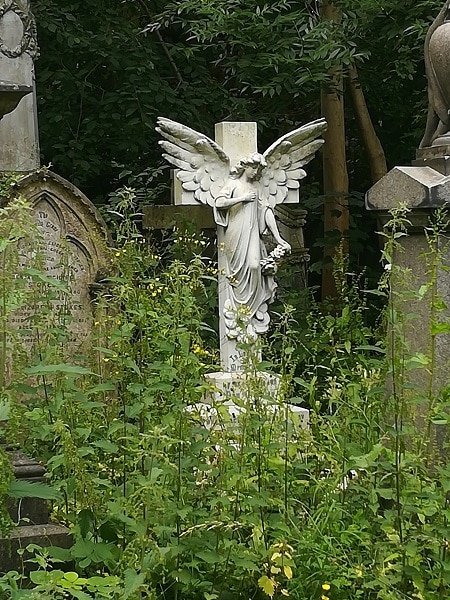
One doesn’t walk through Abney so much as wander and meander, pausing to read headstones and to admire the way nature has recaptured the space. The park’s biodiversity is one of the key reasons that it was turned into a nature reserve by Hackney. Within its 13 hectares, you can find a plethora of old trees, as well as hundreds of insect species and rare fungi. Thrushes, finches, woodpeckers, and owls are just a few examples of the birdlife that thrives here.
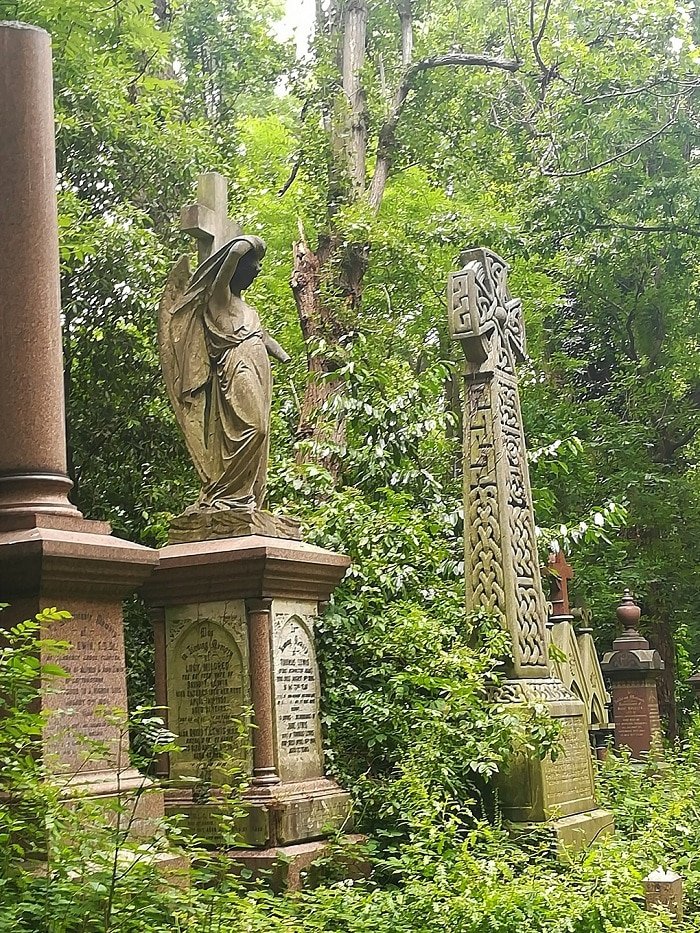
If, like me, you enjoy walking through cemeteries to find interesting graves, Abney Park won’t disappoint. One large monument memorializes Salvation Army Founder William Booth and his wife Catherine. Son Bramwell’s grave is nearby. Abolitionist Sir Thomas Binney lies here, as does feminist author Mary Hays. Then there are various stars of the London Music Halls – Champagne Charlie a.k.a. George Leybourne, actor Albert Chevalier, Nelly Power, and Fred Albert, to name but a few.
Occasional guided walking tours are available. There are also a series of downloadable walking tours discussing the park’s trees, Victorian mourning practices, and more. Or you can simply wander and make your own discoveries, be they historical or botanical. Either way, Abney Park is ideal for peaceful exploration. Once inside, you’d never guess that the main entrance leads onto the bust Stoke Newington High Street.
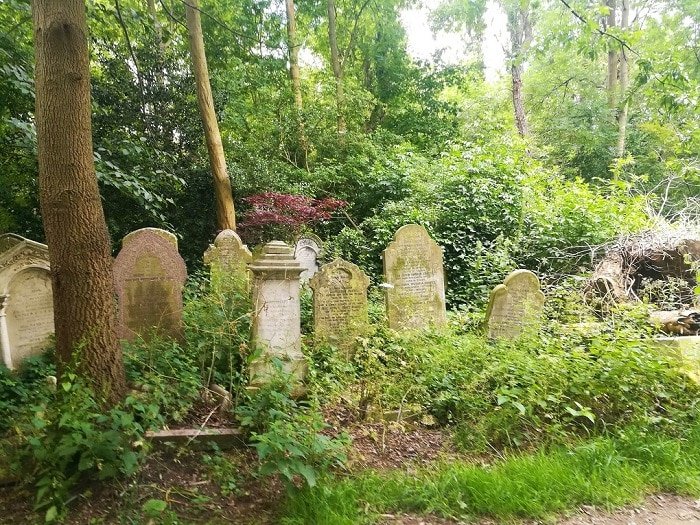
Visiting Abney Park
Abney Park is open to the public from 8am to dusk. Parking is very limited, so we recommend you use public transport to get there. Multiple bus routes pass here, and the Stoke Newington train station is just 200m from the park entrance.


